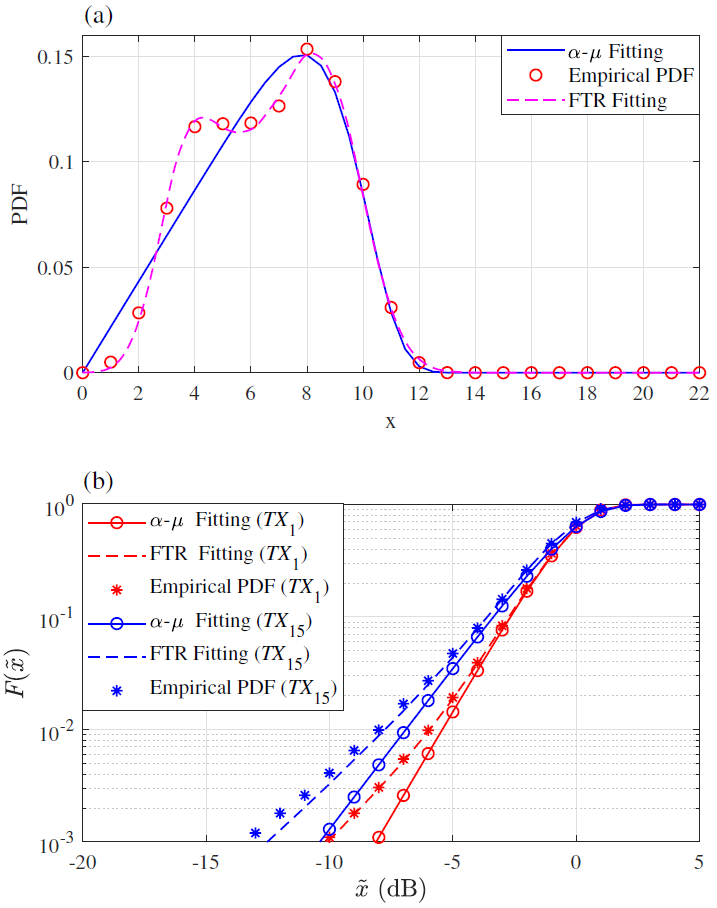Performance and Optimization of Reconfigurable Intelligent Surface Aided THz Communications
Published in IEEE Transactions on Communications, 2022
Recommended citation: Hongyang Du, Jiayi Zhang, Ke Guan, Dusit Niyato, Huiying Jiao, Zhiqin Wang, and Thomas Kürner, "Performance and Optimization of Reconfigurable Intelligent Surface Aided THz Communications," IEEE Transactions on Communications, vol. 70, pp. 3575-3593, May, 2022 https://ieeexplore.ieee.org/document/9743437
Abstract: TeraHertz (THz) communications can satisfy the high data rate demand with massive bandwidth. However, severe path attenuation and hardware imperfection greatly alleviate its performance. Therefore, we utilize the reconfigurable intelligent surface (RIS) technology and investigate the RIS-aided THz communications. We first prove that the small-scale amplitude fading of THz signals can be accurately modeled by the fluctuating two-ray distribution based on two THz signal measurement experiments conducted in a variety of different scenarios. To optimize the phase-shifts at the RIS elements, we propose a novel swarm intelligence-based method that does not require full channel estimation. We then derive exact statistical characterizations of end-to-end signal-to-noise plus distortion ratio (SNDR) and signal-to-noise ratio (SNR). Moreover, we present asymptotic analysis to obtain more insights when the SNDR or the number of RIS’s elements is high. Finally, we derive analytical expressions for the outage probability and ergodic capacity. The tight upper bounds of ergodic capacity for both ideal and nonideal radio frequency chains are obtained. It is interesting to find that increasing the number of RIS’s elements can significantly improve the THz communications system performance. For example, the ergodic capacity can increase up to 25% when the number of elements increases from 40 to 80, which incurs only insignificant costs to the system.
Index Terms: Fluctuating two-ray fading, channel fitting, reconfigurable intelligent surface, swarm intelligence optimization, THz communications.

Fig. 1: System model of the RIS-aided THz communications.

Fig. 3: (a). PDF of the measurement data [25] and fitted distributions. (b). CDF of the measurement data [25] and fitted distributions. The parameters setting can be found in our paper.
